Today’s piece is from correspondent Dave Spaulding.
While I do not consider myself a “rifle guy,” I believe every American should be a rifleman. The concept of every citizen having a rifle, and knowing how to use it, might be the ultimate homeland security. Thus, four to five times a year I break out my AR-15 and practice. When I took an interest in the AR in the late 90’s, I bought several and started a training journey. Along with an armorer course, I went to Thunder Ranch, Gunsite, Blackwater, Tactical Defense Institute and took classes from several traveling trainers.
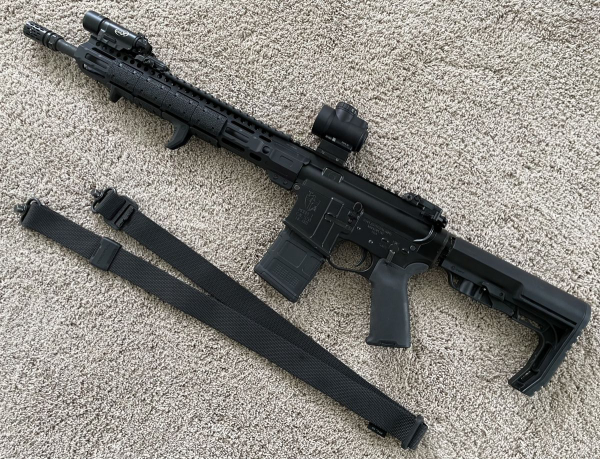
Today, I have narrowed my multiple carbines down to one and it is set up for me. It’s as compact as possible, light weight, sleek and easy to maneuver. If I were still on the job, my cruiser carbine would be set up much the same way. I can hit reliably from contact distance to 300 yards using my chosen 75 grain Speer Gold Dot soft point, so I feel I have my likely needs covered.
The primary reason for the combative carbine is to have a gun with greater reach and precision for the atypical law enforcement or personal defense situation. The faster the threat is neutralized, the better. The AR-15 can be “dressed” however you like, but never rely on gadgets for performance. You can’t buy skill so don’t try. As a rule, an AR setup for combative (not necessarily military) purposes should have:
• An optic;
• Back-up iron sights;
• A sling;
• A mounted white light;
• A muzzle brake/flash hider
Additional items may make your carbine unwieldy so think carefully. I prefer the AR-15 platform because it offers continuity of action with the semi-auto pistol. It has a pistol grip, a push-button magazine release, a “slide action” that can be manipulated with the support hand and the ability to clear stoppages quickly. I prefer 20-round magazines. As I have a light, sleek gun, why add a big hook at the bottom? I also like the idea that I can reload it like a pistol; I can get the palm of my hand under the magazine floor plate and “heel it” into the mag well, much like a pistol. I’m not holding it like a soda can and having to push-pull to make sure it is seated. I also think 20 rounds will handle all but the most extreme problems.
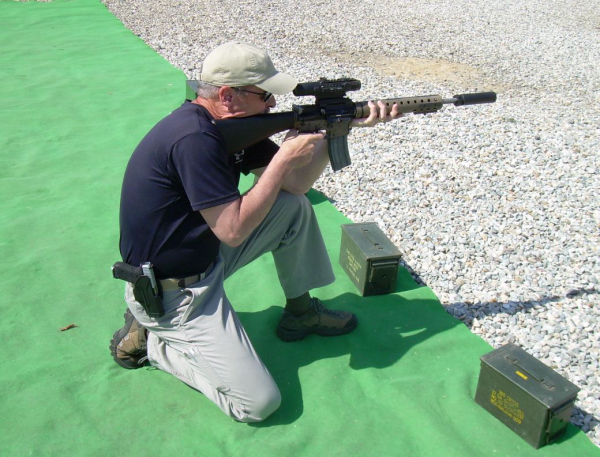
Controlling the recoil of the two systems is also similar by putting body mass behind the gun to keep the muzzle on target. Getting “behind the gun” is not the same as sticking your butt out. The carbine’s recoil is more “rearward linear” than a pistol as the bore of the AR is actually in line with the stock while the pistol sits above the hand. Having the bore in line with the shoulder makes recoil control even easier.
Combat level speed and accuracy is achieved by squaring the body behind the gun. Many shooters want to blade their body due to the gun’s length, but it’s a mistake. Think of it like your upper torso as a gate, when the gate is closed, it's locked in line with the rest of the fence. If the gate is left open to swing, it can be moved with little effort.
Keep the shooting hand high on the pistol grip as it keeps the hand in proper alignment behind the trigger for better trigger control. If the standard grip allows too much index finger to enter the trigger guard, get a grip that adds material behind it. Also, by pulling back on the grip, the gun is better locked into the shoulder increasing control.
Grip the forward hand guard firmly with the support hand, which differs from shooter to shooter. Some prefer to use a vertical fore grip while others don’t. When using a vertical grip, don’t grasp it like holding a drink glass. Keep the thumb on the support side and not wrapped around, mimicking the thumbs forward grip on a pistol. This keeps the wrist locked and allows the support arm elbow to bend down holding the muzzle in place.
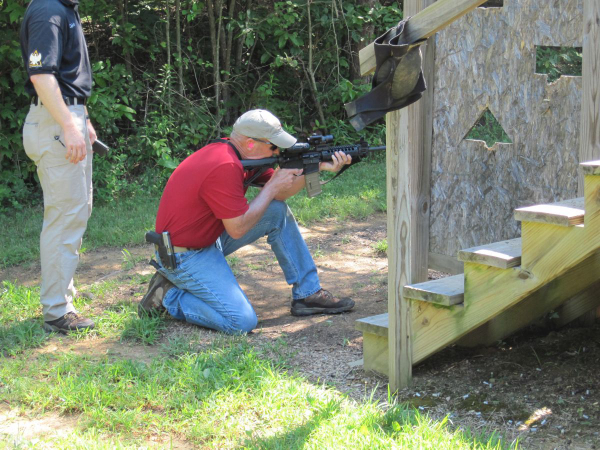
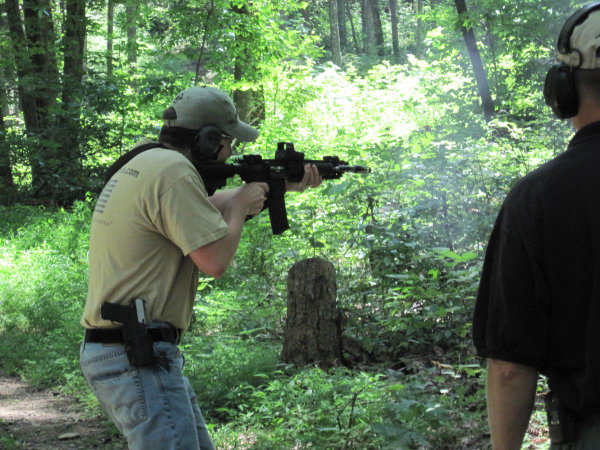
Some instructors advocate gripping the hand guard as far forward as possible with the thumb wrapped over the top. This “C grip” allows for solid control when driving the muzzle from target to target. However, when watching news footage from the wars in Iraq and Afghanistan, you’ll see many soldiers and marines grasping the magazine well. Years back, I broached this with a couple of recently returned Army Rangers and they told me they had been trained in the C grip technique and liked it. But they also said when bullets are inbound and the muzzle is leading toward the threat (around the corner or over a wall), few want to place their hand near the muzzle so they pull it back and grasp the magazine well. Sometimes the range and the street don’t meet.
Keep the head locked down on the stock. Not only does this give a consistent view through the optic, it also helps hold the gun firmly in place. With the head locked down and the shoulders forward, there’s no place for the gun to go so the recoil comes straight back, making follow-up shots fast. Recently, there has been a trend towards higher mounted optics to offer greater situational awareness, especially at close range. I’ve tried it and it feels odd to me, but I understand what is being accomplished. The choice is yours.
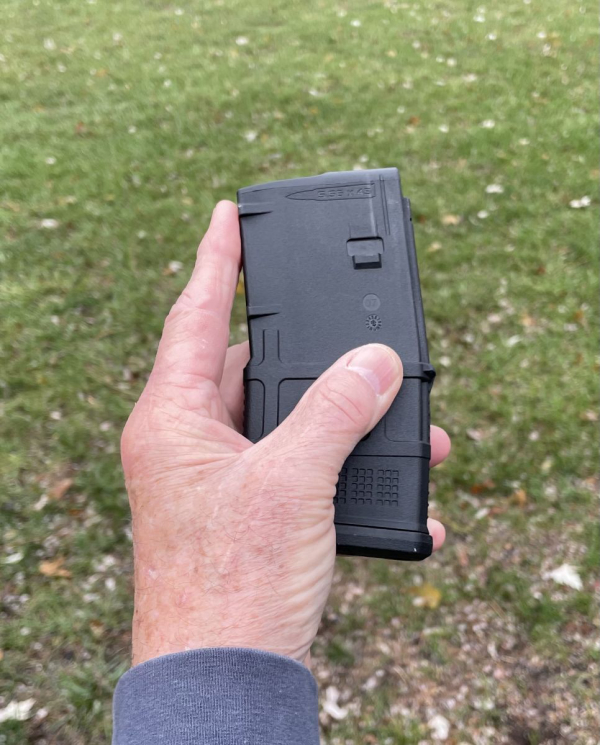
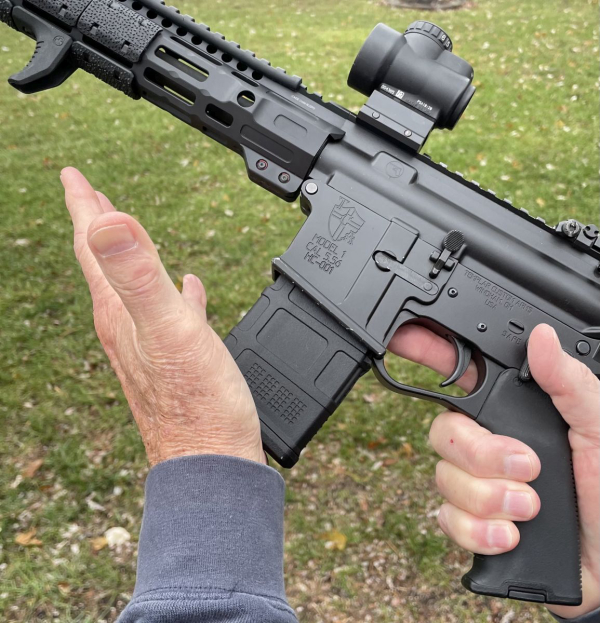
Once you’ve mounted the carbine as described, drop your strong side elbow. This performs a few important functions. First, it tightens the pectoral muscle, which helps solidify the carbine’s position. Second, it helps keep the elbow in and prevent injury. As someone who smacked his elbow on a door frame during a building search for a bank robber, I can’t express how important this is.
Incorporate tactics into your shooting. Tactics keep you from being seen and shot. Shoot around objects of various sizes and heights, move into and out of position, reload and “run the gun” in unorthodox positions. If you are a law enforcement officer, practice pulling it out of whatever type of rack the gun is carried in while being transported.
Combative firearms training doesn’t vary greatly from weapon to weapon, it just needs to be relevant and prepare for the likelysituations. Remember: Winning a gunfight usually comes down to adapting your practiced skills to the situation that’s unfolding before you.
— Dave Spaulding